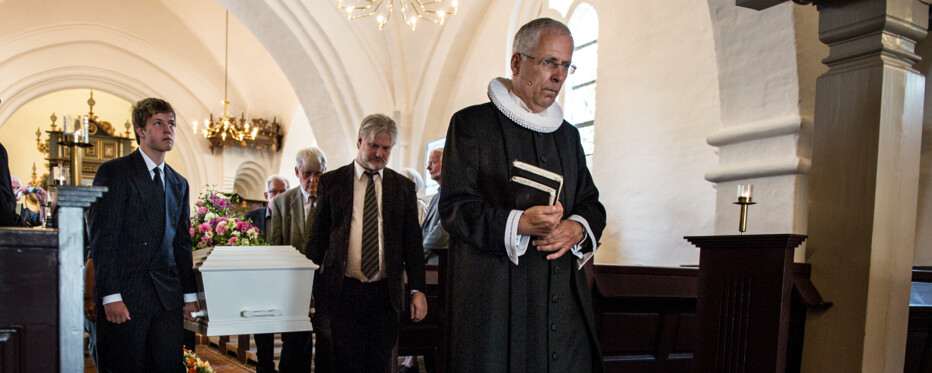Remembering the deceased and proclaiming the resurrection
A funeral in the Evangelical Lutheran Church is a rite where we take leave of the deceased and listen to the Christian message of resurrection, hope and comfort. The hymns that we sing give us images to describe resurrection and eternal life. The prayers that we pray express our grief, our loss and the Christian hope.
What happens at a funeral?
The order of service at a funeral can be found on the page Liturgies in other languages. It can be used both at burials and at cremations. At a burial the service ends with casting earth on the grave in the churchyard. In the case of cremation the earth is cast on the coffin in the church or chapel. The pastor throws earth on the coffin three times, addressing the deceased with the words: "from dust you have come. To dust you shall return. From dust you shall rise again." These three handfuls of earth symbolise the movement life – death – life. The funeral rite reminds us of the promise we received when we were baptised: That God is with us in life, in death and in eternity.
Before the funeral
When someone dies, the death must be notified within two days to the church office or the pastor of the parish concerned. You can fill in the required form yourself or, for a fee, get help from an undertaker. The church office will inform the relevant authorities about the person's death.
Funerals for members of the church are normally conducted by a pastor. The pastor must ensure that the wishes of the deceased are adhered to with regard to whether or not the ceremony should be conducted by a pastor. Before the funeral the family of the deceased meet the pastor to prepare the funeral, e.g. to choose which hymns will be sung. Find your parish church by following the instructions on the page Find a church.
Burial grounds
Many churches are surrounded by a churchyard. These are consecrated according to Christian tradition and belong to the church, but everyone has the right to be buried in Christian churchyards, whether or not they are members of the established church. In some churchyards, special areas are set aside for Muslim or Jewish graves. Separate Jewish and Muslim burial grounds also exist.



